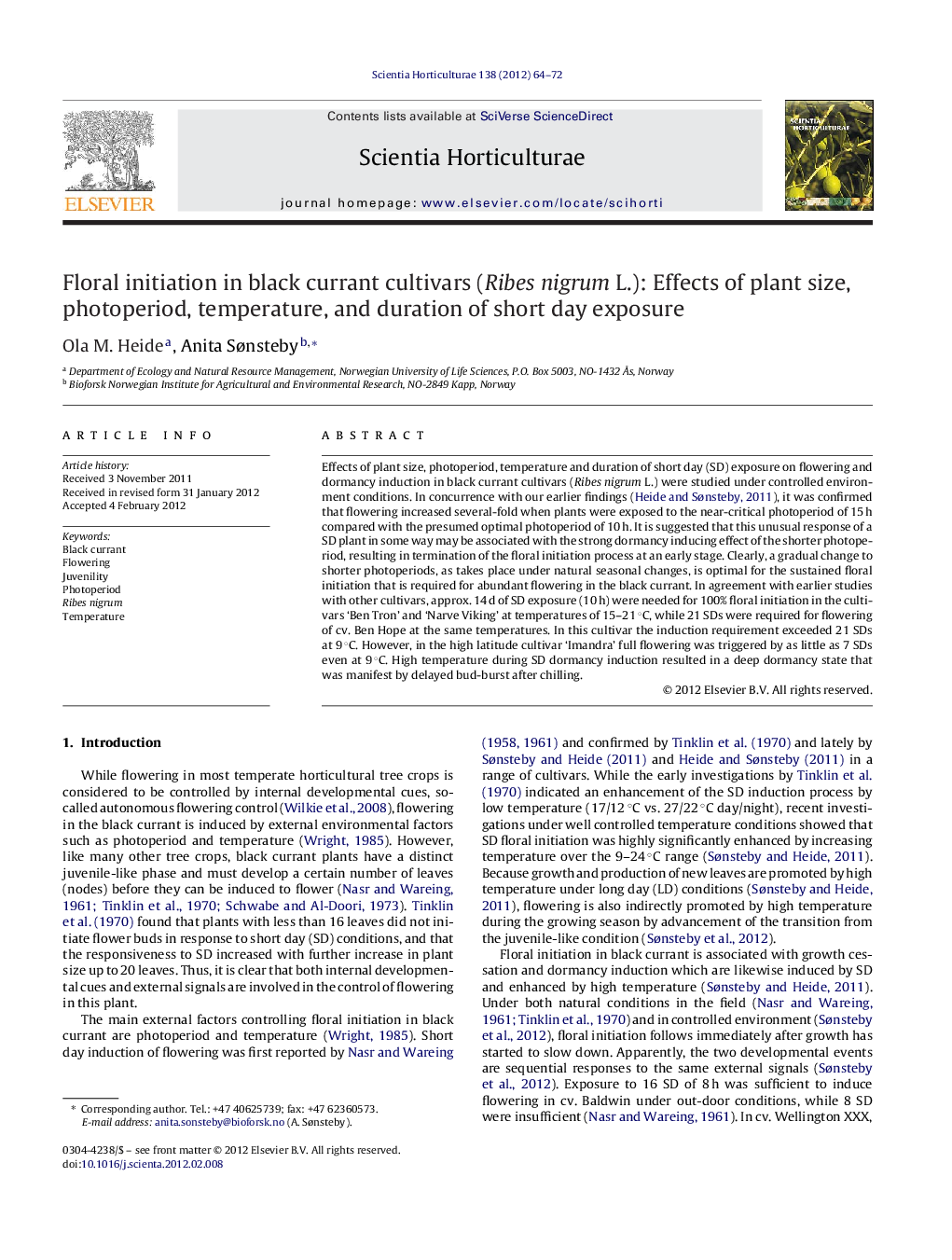| کد مقاله | کد نشریه | سال انتشار | مقاله انگلیسی | نسخه تمام متن |
|---|---|---|---|---|
| 4567695 | 1628860 | 2012 | 9 صفحه PDF | دانلود رایگان |

Effects of plant size, photoperiod, temperature and duration of short day (SD) exposure on flowering and dormancy induction in black currant cultivars (Ribes nigrum L.) were studied under controlled environment conditions. In concurrence with our earlier findings ( Heide and Sønsteby, 2011), it was confirmed that flowering increased several-fold when plants were exposed to the near-critical photoperiod of 15 h compared with the presumed optimal photoperiod of 10 h. It is suggested that this unusual response of a SD plant in some way may be associated with the strong dormancy inducing effect of the shorter photoperiod, resulting in termination of the floral initiation process at an early stage. Clearly, a gradual change to shorter photoperiods, as takes place under natural seasonal changes, is optimal for the sustained floral initiation that is required for abundant flowering in the black currant. In agreement with earlier studies with other cultivars, approx. 14 d of SD exposure (10 h) were needed for 100% floral initiation in the cultivars ‘Ben Tron’ and ‘Narve Viking’ at temperatures of 15–21 °C, while 21 SDs were required for flowering of cv. Ben Hope at the same temperatures. In this cultivar the induction requirement exceeded 21 SDs at 9 °C. However, in the high latitude cultivar ‘Imandra’ full flowering was triggered by as little as 7 SDs even at 9 °C. High temperature during SD dormancy induction resulted in a deep dormancy state that was manifest by delayed bud-burst after chilling.
► SD induction of flowering and dormancy was promoted by high temperature.
► Surprisingly, optimal flowering took place in a near-critical 15-h photoperiod.
► This unusual response might be due to the strong dormancy inducing effect of SD.
► SD requirement for flowering varied from 7 to more than 21 d.
► High temperature during SD induced a deep dormancy state and delayed bud-burst.
Journal: Scientia Horticulturae - Volume 138, 1 May 2012, Pages 64–72